Some months ago, I mentioned that I would attend this event:
Well, circumstances prevented me from attending the one back in June (no, the fact that one of those days is my sister's birthday wasn't among said circumstances), so I went to the November show instead. By the way, I suspect the choice to hold this event at the local firehouse is because it is a block away from the historic Gettysburg Hotel, where I stayed for two nights. Here's what it looked like when I arrived:
And in the morning:
Regrettably, I didn't take any more pictures while I was walking about town on the morning of the 10th, and even if I did, this isn't Urban Exploration, you came here to see guns! Well, here you go:
A model 1859 Berdan-Sharps (to my own countrymen, yes, the same Hiram Berdan who designed the original berdanka, which I definitely want to add to my collection, if I can find one) and a model 1881 Marlin .45-70... oh, you noticed the rocket launcher, did you? Yeah, there were a few of those, but I didn't get any good pictures of them. I did, however, get some good pictures of machine guns.
A Degtyarëv light machine gun, which saw service in the Red Army from 1928 until 1949, when the Red Army was officially reorganised into the Soviet Army. It's very similar to a Lewis gun, but the conical flash hider is distinctly Russian. They are still in service today (though not in the Russian military, which adopted the Pulemët Kalashnikov, or PK, as the standard light machine gun in the 1950s to replace the myriad of different designs used during the Great Patriotic War), and this one was apparently captured in Iraq.
Bad moustache man's buzzsaw, or symbol of Ukrainian resistance? You be the judge.
Not being an automatic weapon expert, I don't know what this one is, and I didn't see a tag on it. Perhaps one of you could identify it. Here's a close-up:
That being said, tags aren't always accurate. Here's another model 1859 Berdan-Sharps, but it's labelled "1852 Sharps." It's not, the model 1852 Sharps looks very different:
I'll take a break from guns for now, which is appropriate to the layout of the tables, since the entire middle of the show was taken up with patches. Yes, patches. Normally, I wouldn't have bothered taking any pictures, but I'll admit, some of these were surprising:
You have to admit, it isn't every day you see "America" embroidered in Cyrillic letters. Naturally, this one stuck out to my eyes. Apparently, this was issued to members of an advisory task force sent to Moscow during WWII. I figured I'd check out some other patch collections to see if I saw anything else of interest. I wasn't disappointed:
Every time I see "The Royal Fusiliers," a very sad song starts playing in my head. Sniff. Ahem, now for something completely different... some survival equipment!
We have emergency lights, canned fuel, signal mirrors, water purification tablets, candy, prophylactics (because priorities, right boys?) and these adorable compasses:
Here are some close-ups of the emergency lights that the RAF used during WWII. As you can see, they are very different from the American ones:
And of course, stupid auto-focus prefers the text in the background. I really should remember to check these pictures more closely right when I take them.
One thing you may not know about me is that I'm a pilot, so I recognised these immediately. One is a compass, the other is too occluded to identify, but it's also some kind of aircraft gauge. Personally, I'd guess "artificial horizon," since those were easily the most fragile back in the day. Anyway, before I get back to guns, let me show you some swords.
Most of these are US cavalry swords from the early 19th century, yet despite their similar age, were in vastly different conditions. The rusty one, for example, is a Starr pattern sabre, distinguished by its clipped point (yes, that means the same thing for a sword as it does for a knife). I didn't get any more pictures of this one, but despite its outward appearance, the blade was somewhat decent, since the scabbard was filled with grease. This vendor had another sabre of the same type which looked a lot better on the outside, but as soon as I pulled the blade out, what I saw was horrific: it had been very "well-used" if you catch my drift.
Any non-American swords present were most likely captured. I counted two katanas showato (WWII), some German and Austrian sabres (WWI), and this Spanish combat engineer's sword (Spanish-American War):
Of course, there were a couple of exceptions, such as this Scottish basket-hilt broadsword:
And an SS officer's sword, which I neglected to get a picture of. BTW, despite how narrow that Scottish sword looks, it is indeed a broadsword, not a backsword. I checked. Anyway, back to guns!
With the exception of the Belgian boltie on the right, these are all British breechloading caplock muskets. Very unusual designs if all you've ever seen have been the early American breechloaders. And yes, that's another rocket launcher on the left side of the photo. Oh, and there's a landmine behind the rifles. Of course, the weirdest thing here was this:
No, I'm not going to tell you what it is. My challenge to you is to identify it. I know what it is, but only because I asked the person who was selling it. Anyway...
That "Belgian boltie" I mentioned earlier was a Beaumont rifle chambered in 11.5x50mm. For comparison, .45-70 is 11.6x53, in other words, not all that unusual compared to other military cartridges of the time. Yes, I'm aware that the Beaumont is actually a Dutch design, but the one on the vertical rack was Belgian. This one is a model 1875 Beaumont-Vitali. The rest of the guns on this rack were considerably more modern, though there were only two that I immediately recognised.
The third (from top) appears to be a Lee-Enfield. The one on the bottom, meanwhile...
Still don't recognise it? It's a model 1944 Mosin-Nagant carbine with folding bayonet, which I already knew about thanks to Brandon Herrera (what a shame that Russian boy must turn to American gun nuts for knowledge about Russian weapons!).
I was extremely tempted to buy it, but I'd much rather get my grubby little paws on a full-length Mosin-Nagant rifle for the simple reason that I already own a bayonet for one. Personally, I'd prefer a sniper variant, even if it doesn't come with a scope (you can't mount a scope on a regular Mosin-Nagant rifle because... well, if you don't know, maybe you need to learn a thing or two about rifles), but on this side of the pond, beggars can't be choosers, and I'm not going to buy another gun until I've saved up enough for a replica of a model 1874 Sharps (BTW Kat, THAT is the Quigley rifle, though FTR his was chambered in .45-110, and I want one chambered in .50-140... eventually, I'll settle for .45-70 and then either swap out the barrel at a later date or just build my own).
I'm sure there's an interesting story to go with this corroded Luger, but I didn't get a chance to ask. Perhaps it has something to do with these trinkets:
Right, enough of that. If I wanted battlefield scrap, I'd go for a piece of the Yamato or the Bismarck, thank you very much.
Back in the bad old days of cap-and-ball shot, nothing was standardised, so there were plenty of oddball designs like this one:
And then there's this miniature suit of armour on a wooden drawing mannequin. Very interesting:
Some more miniatures that are a little more historically congruent:
And now for something completely different. Again. How do I even fit this in here? It looks like some kind of self-contained breathing apparatus:
Shells! Pre-WWI 37mm light artillery shells, to be specific. The only exceptions are the grenades and that WWII-era 37mm anti-tank round, which has a larger case:
Over on the other side was a larger 57mm (I assume, I never got a chance to examine it the way that I did with many other items here) shell:
I'll wrap this up with a few more machine guns, starting with these non-firing film props:
Last but certainly not least, a model 1918 Browning machine gun:
There is a much larger show in Baltimore, Maryland that I also plan on attending in March. I will probably end up taking hundreds of photos and sorting them into several posts (not all of which will be in this community, BTW) by both category and day. We shall see. Perhaps I'll even take something home, depending on how much money I happened to have at the time. Now, if you'll excuse me, I need to go practise with my own boltie, which is a Savage model 111 chambered in .30-06 (7.62x63). Bloody thing needs a new stock (I may end up having to make my own, despite knowing $%£?-all about making gunstocks), but it's tolerable for now. Cheers, mates!
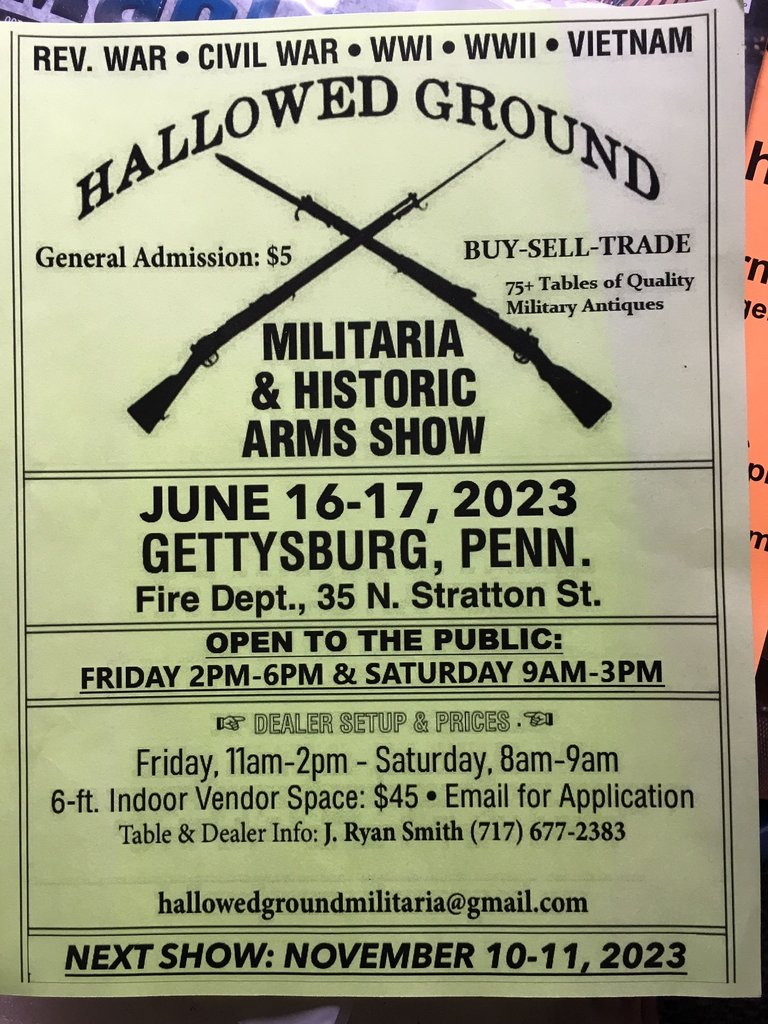
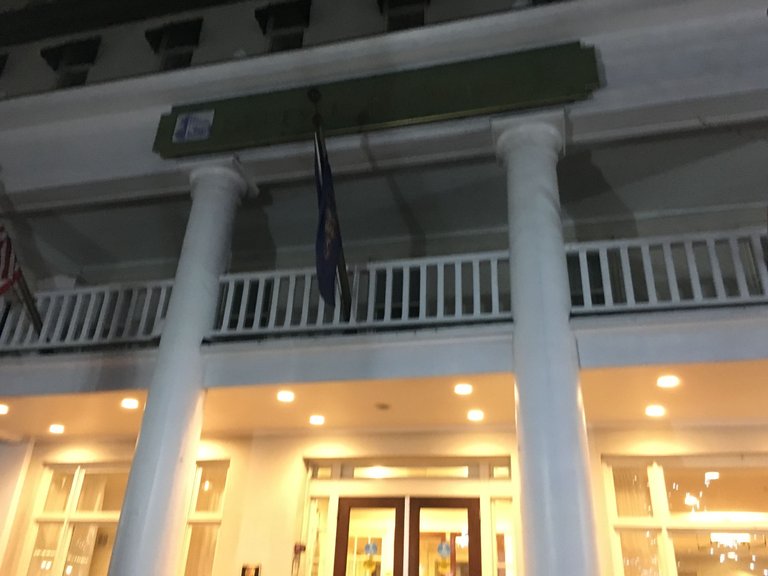

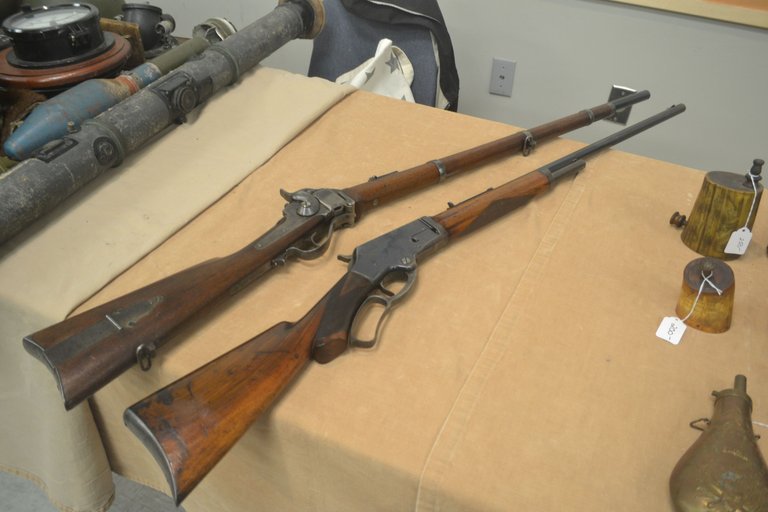
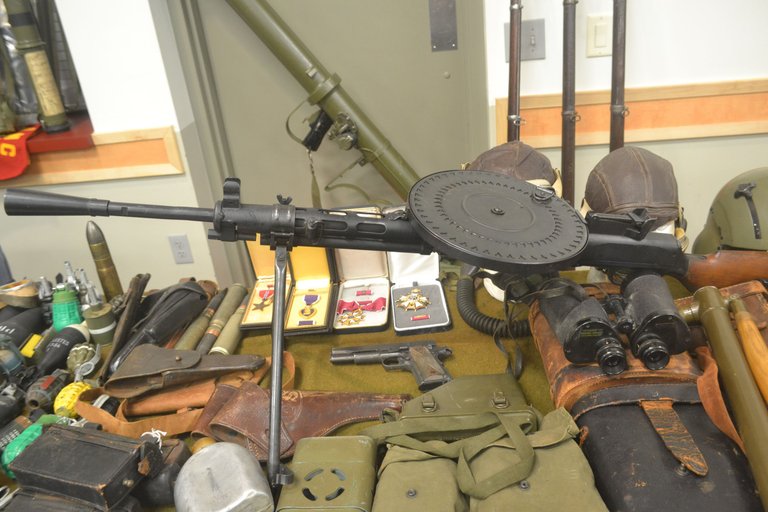
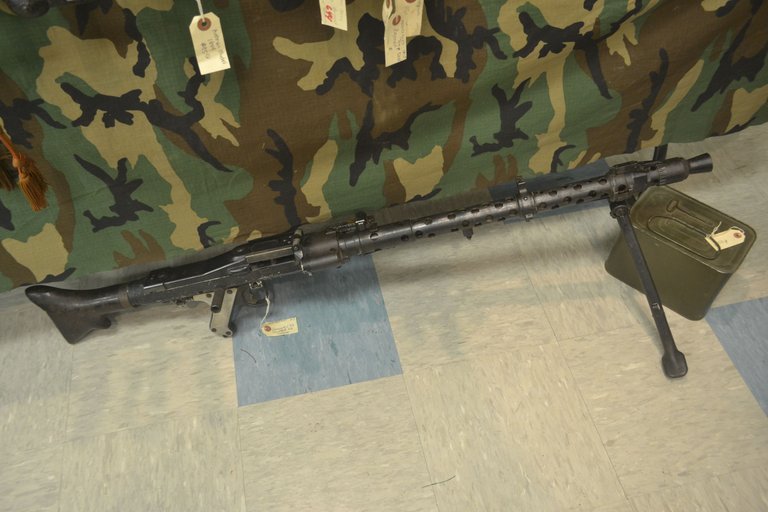
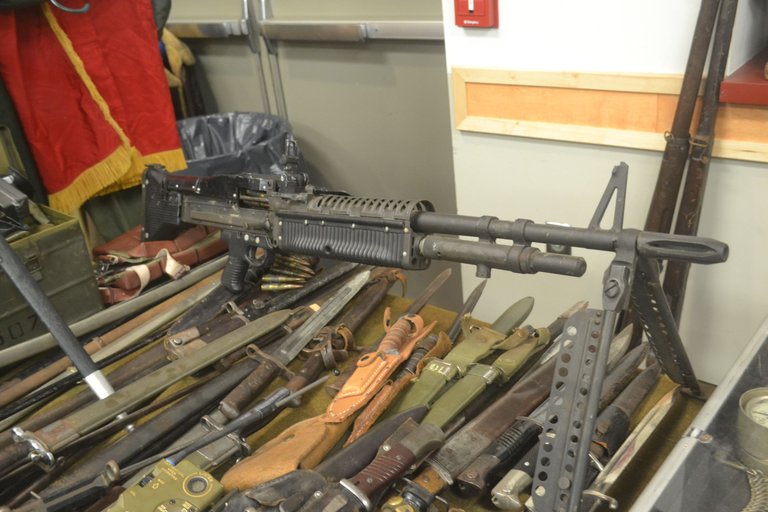
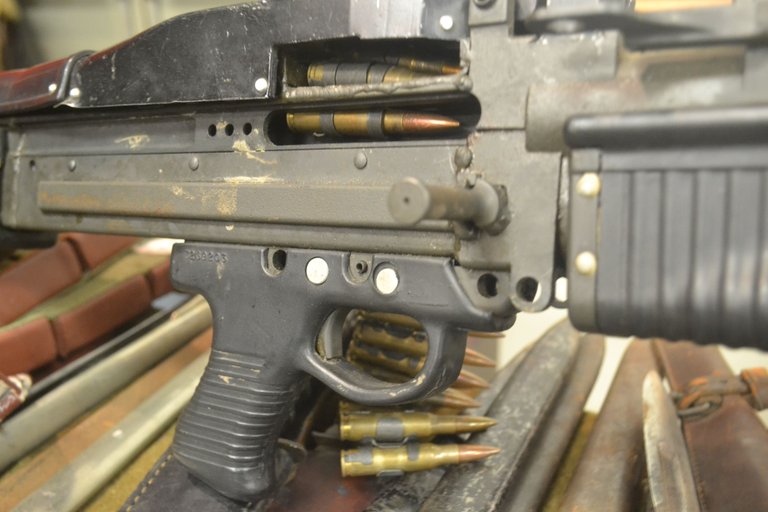
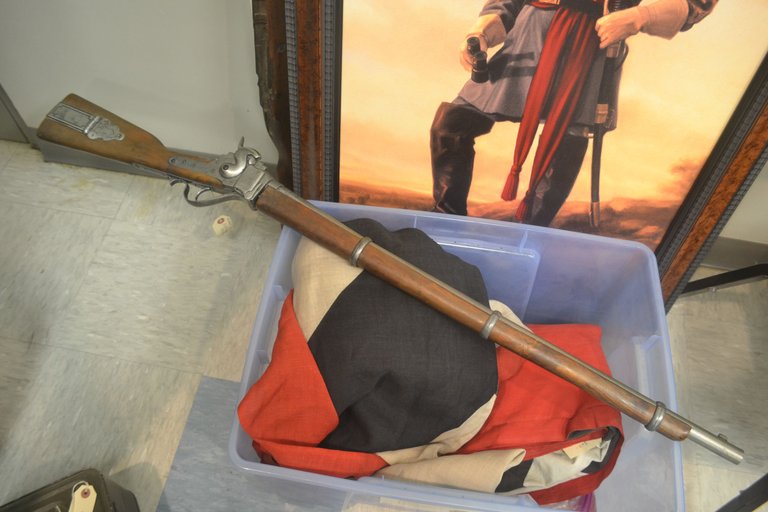
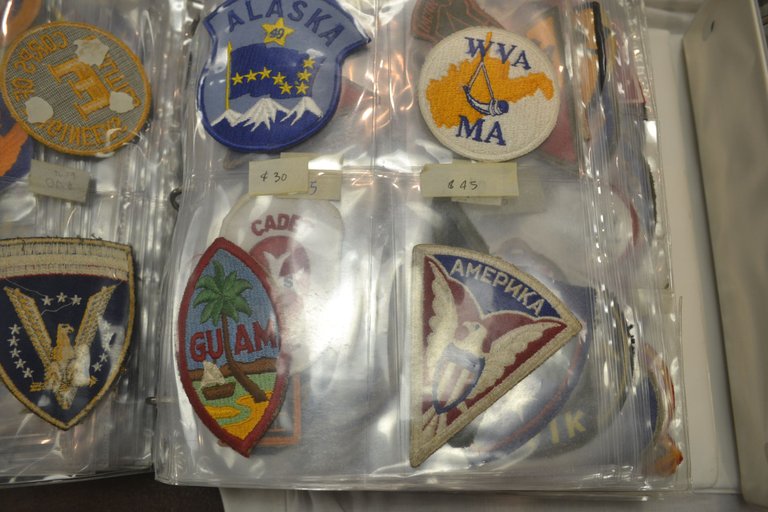
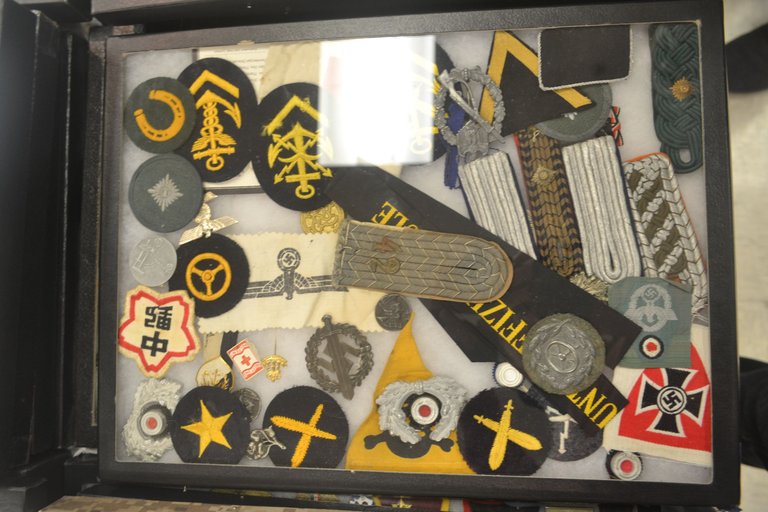
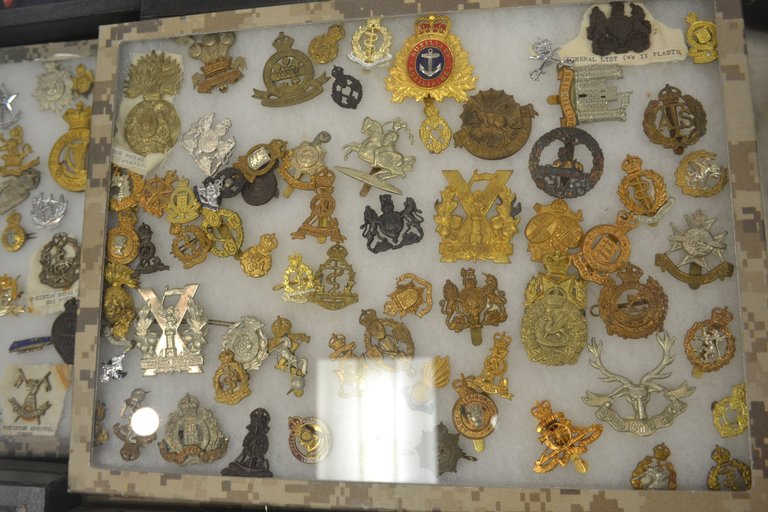
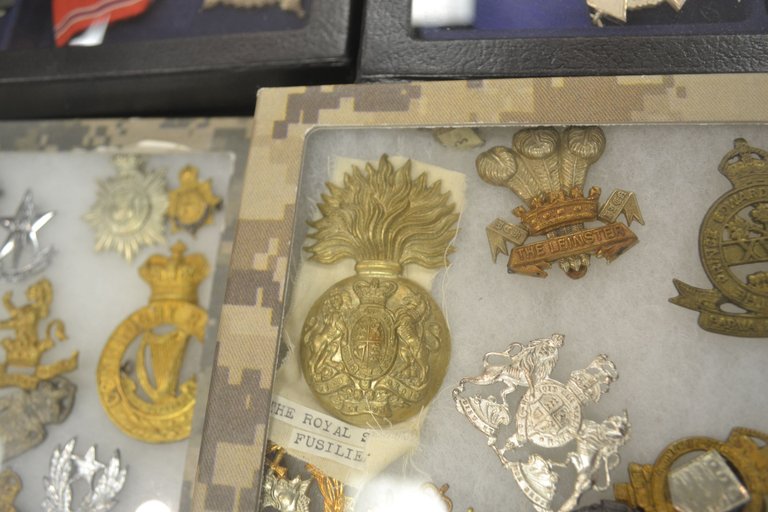
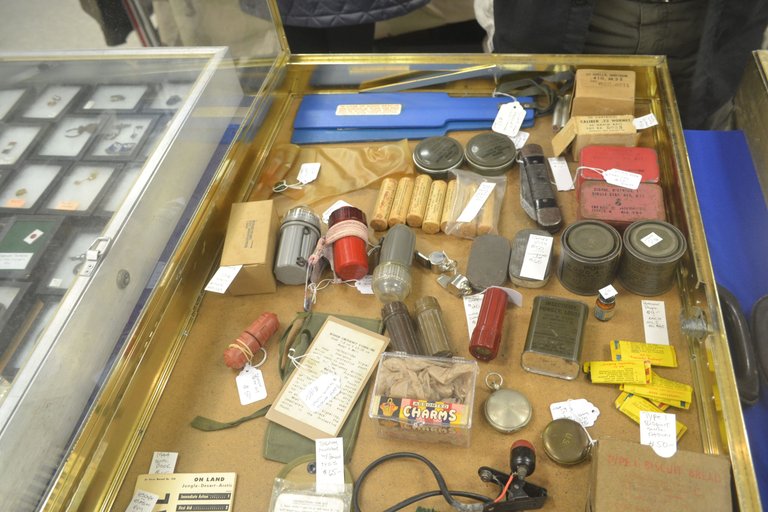

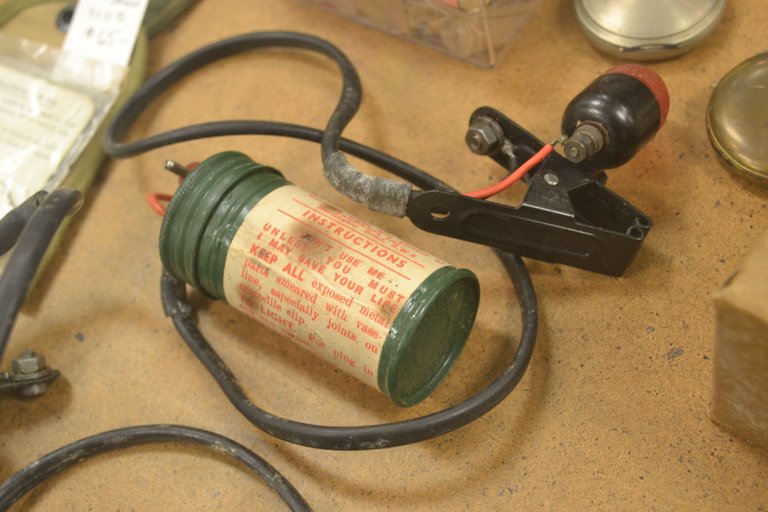
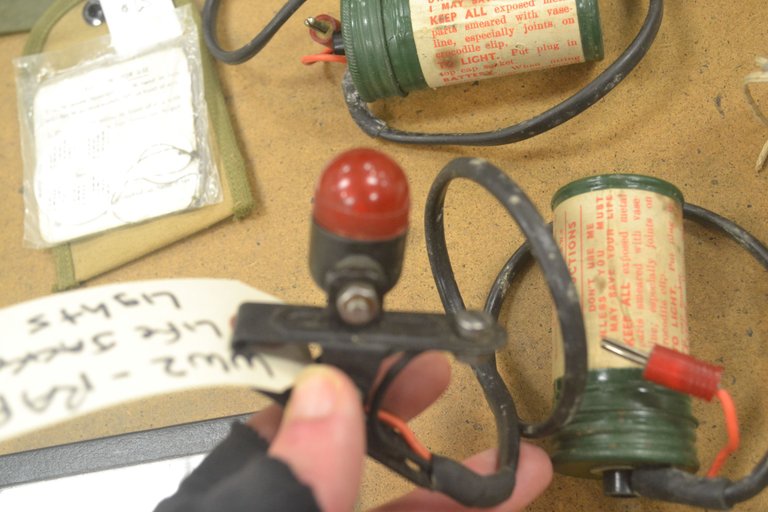
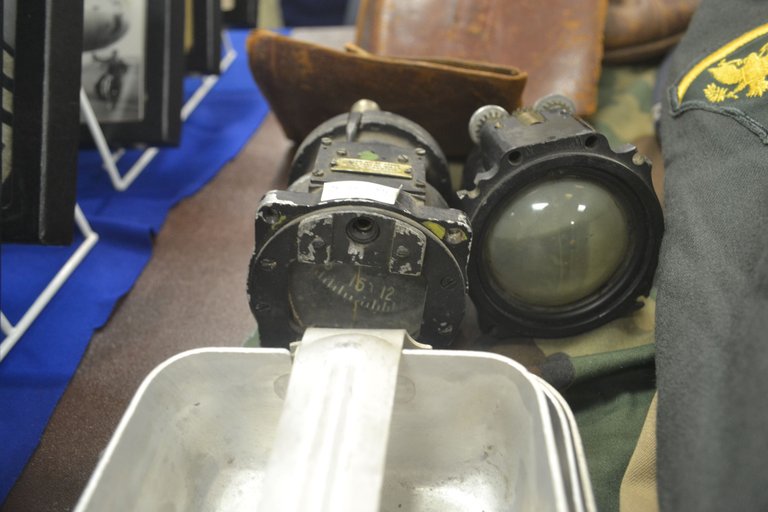
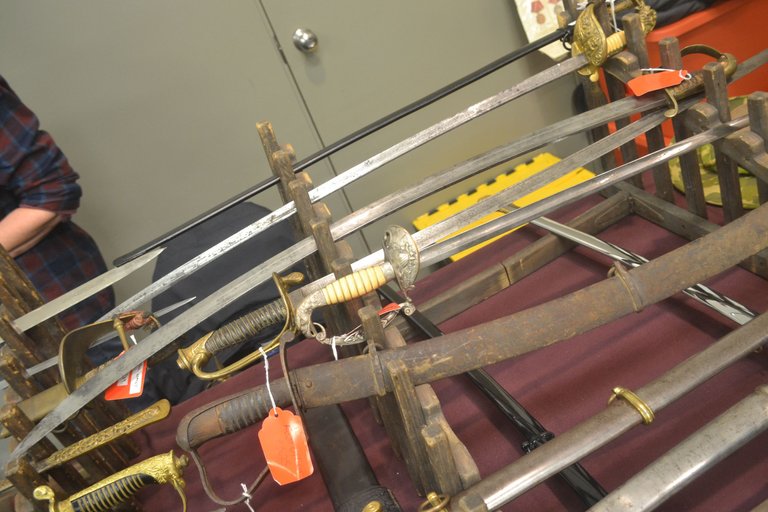
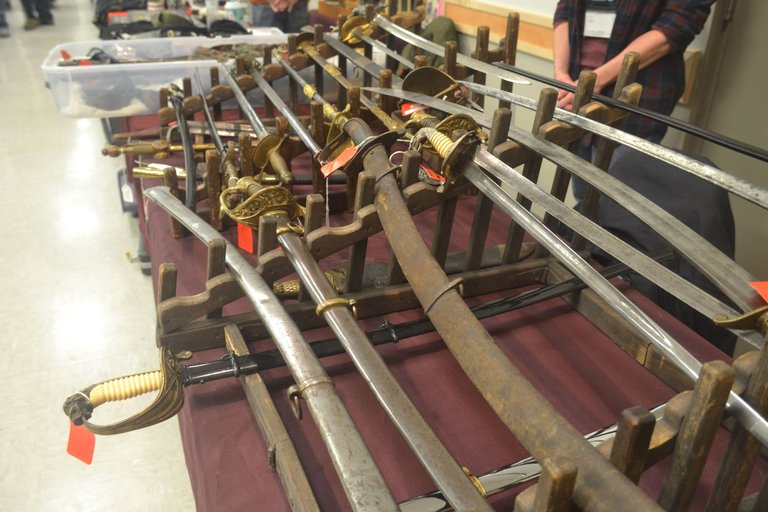
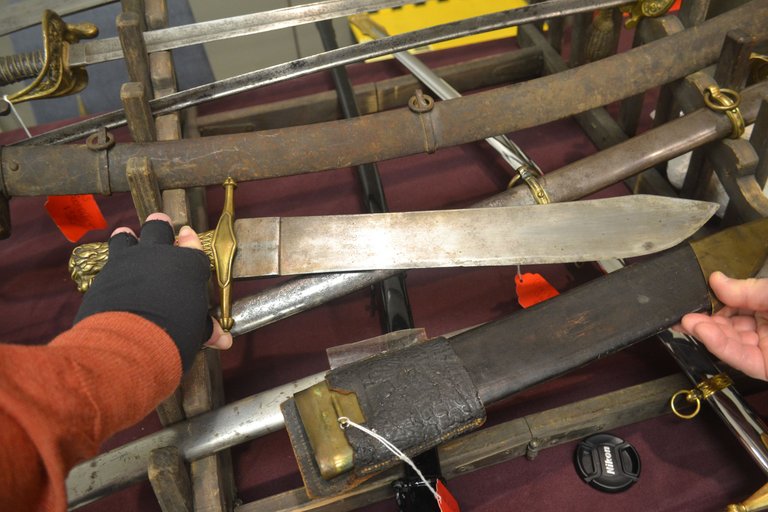
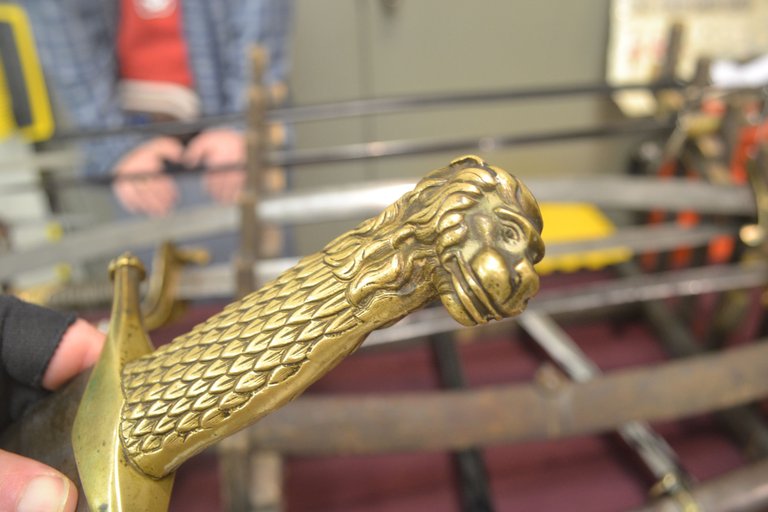
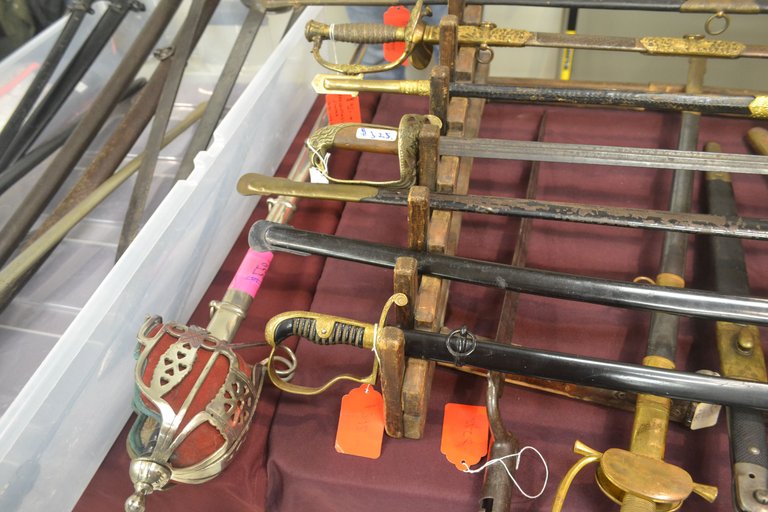
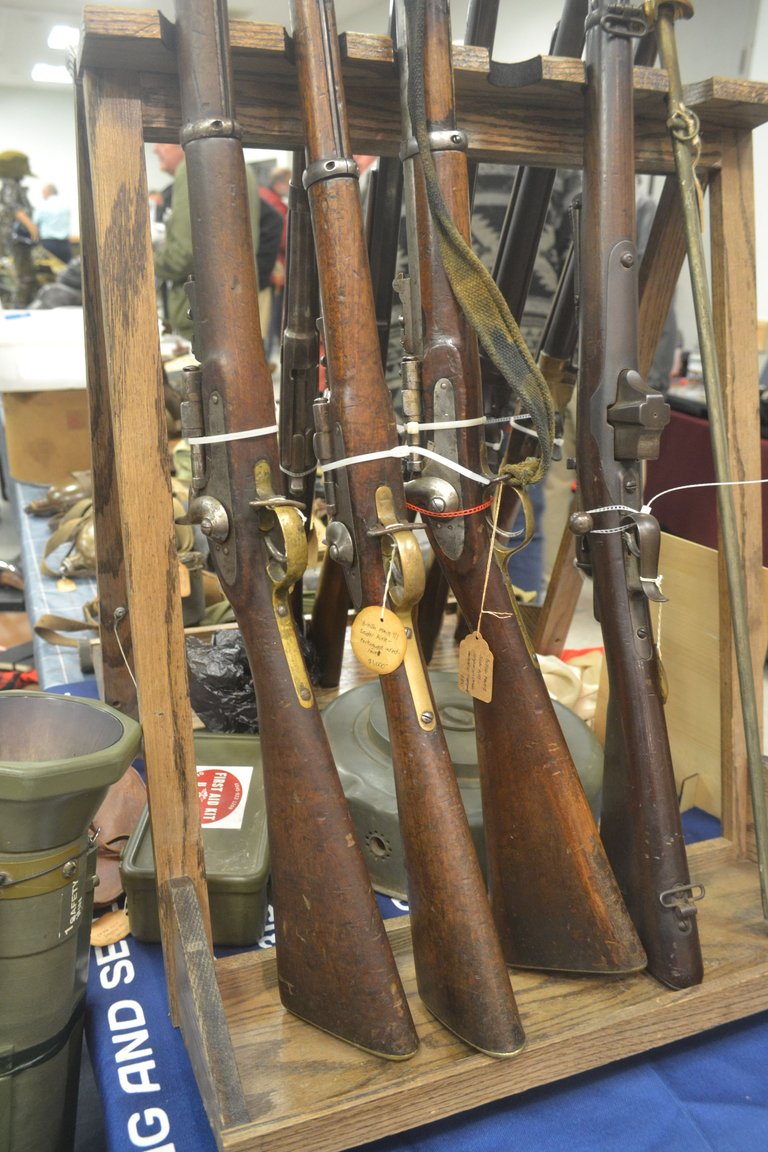
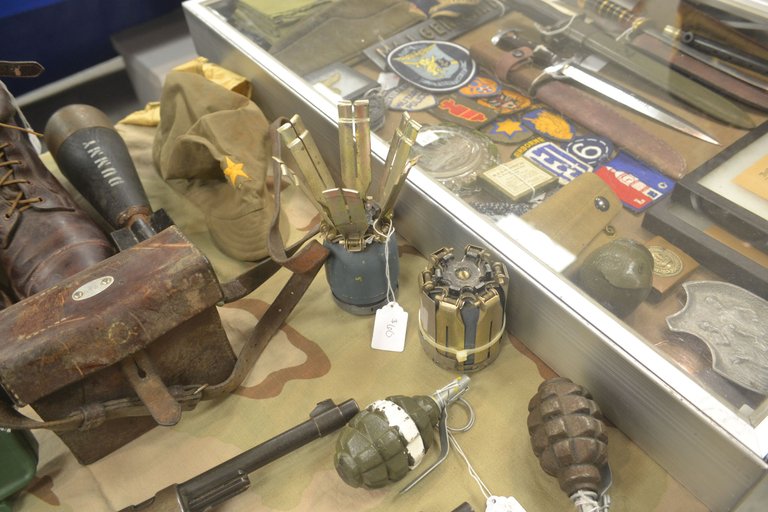

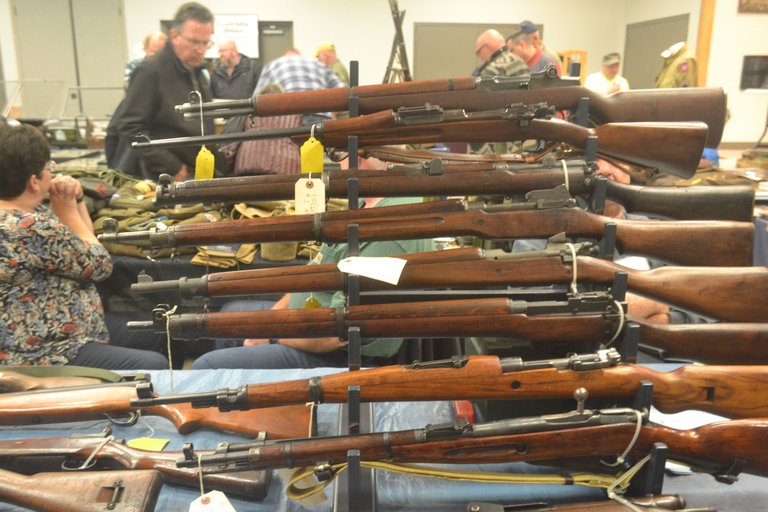
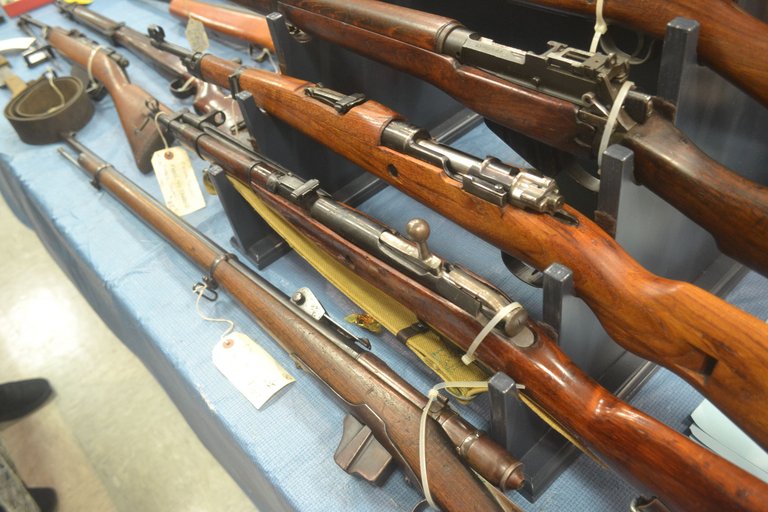
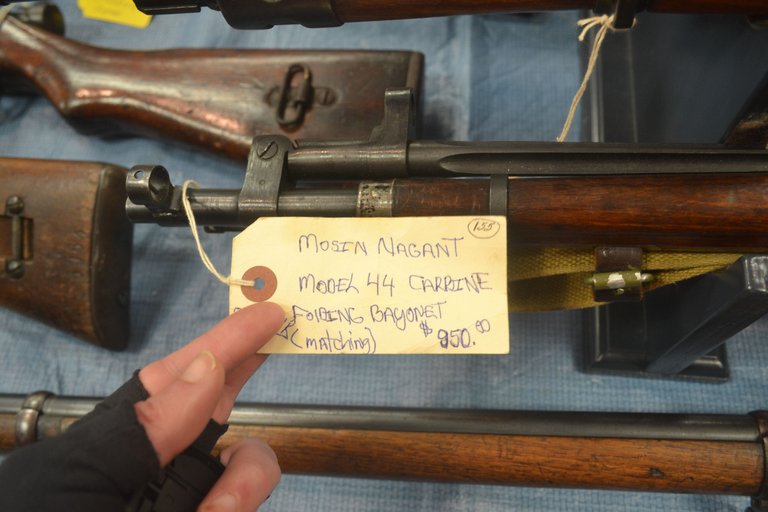
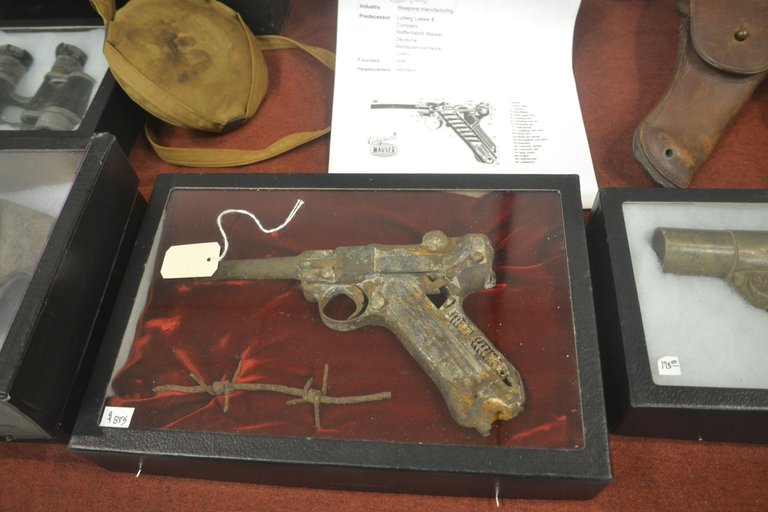
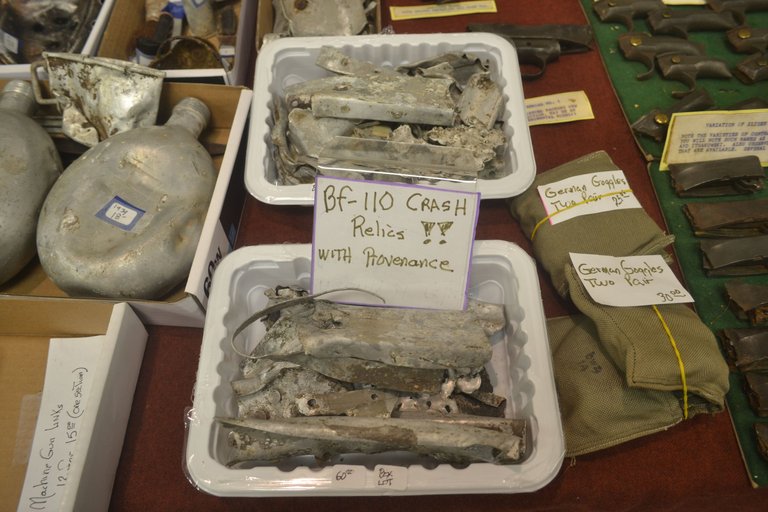
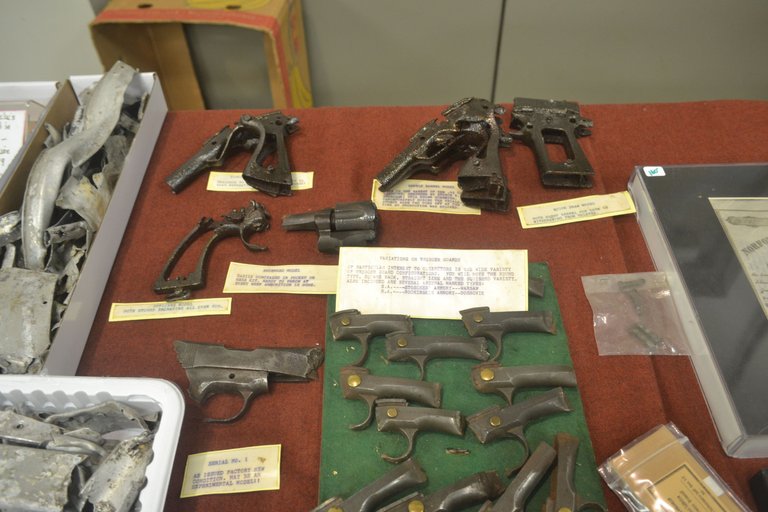


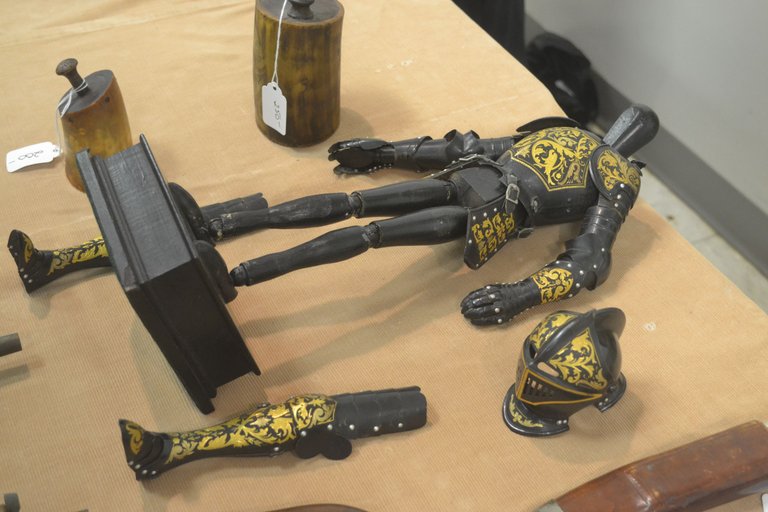
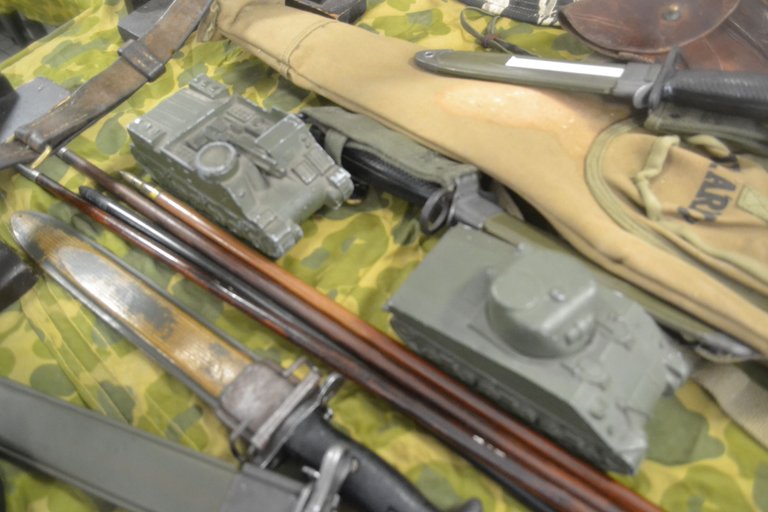
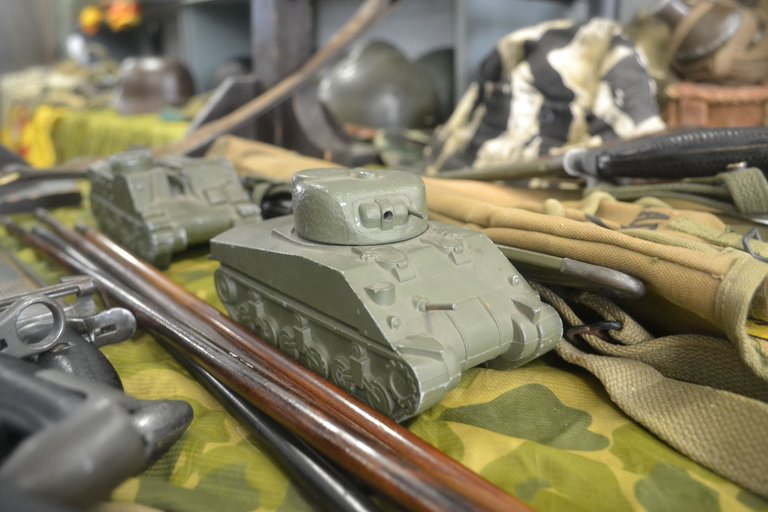

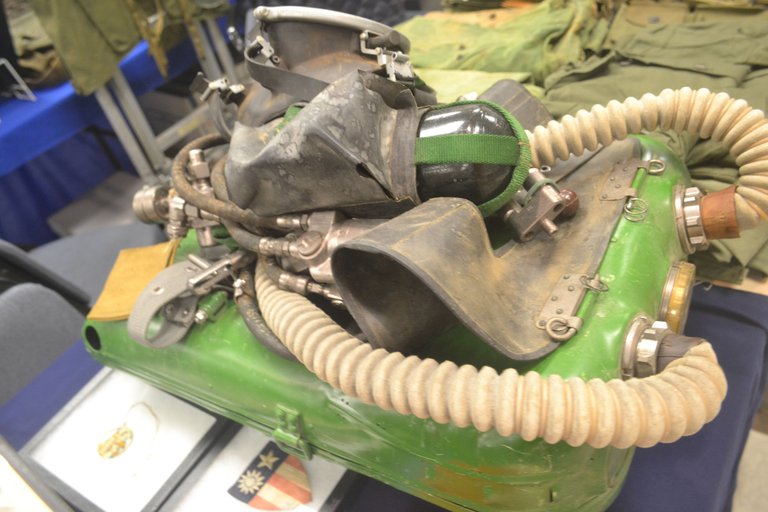

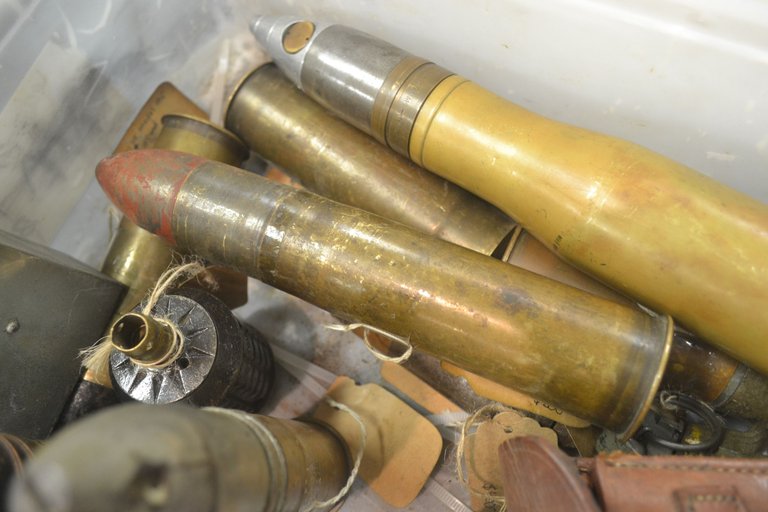
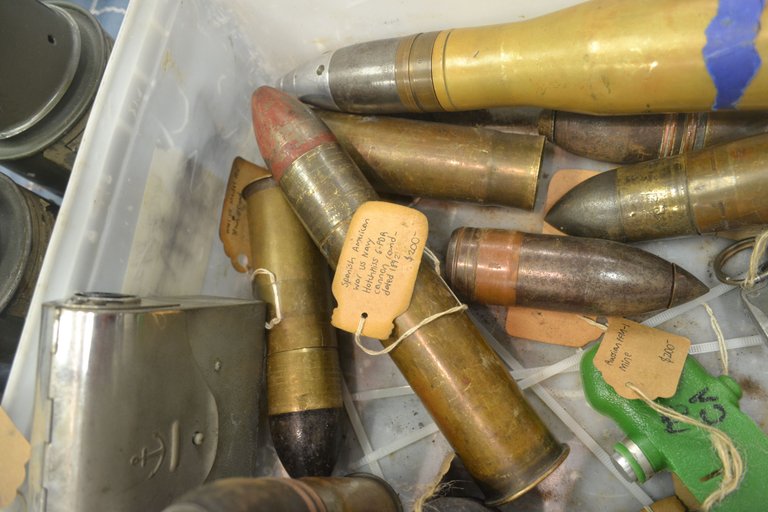
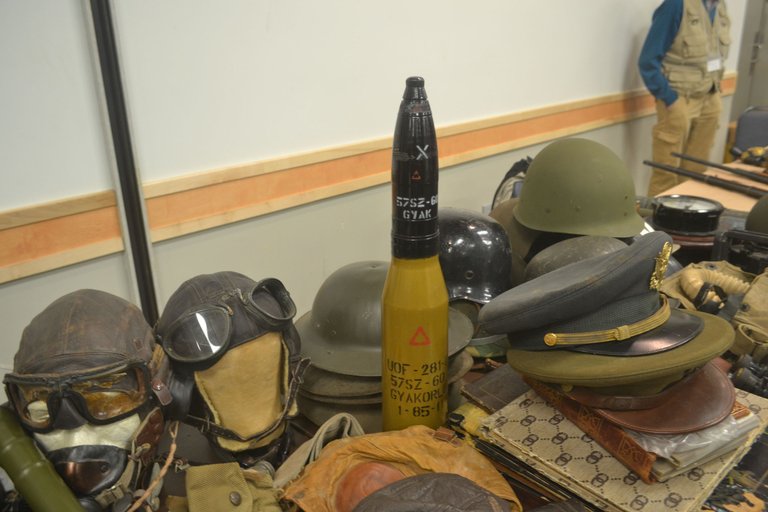
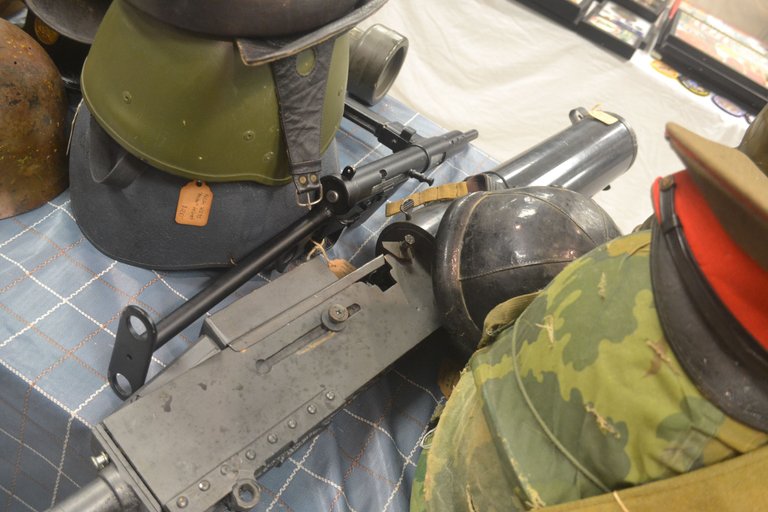
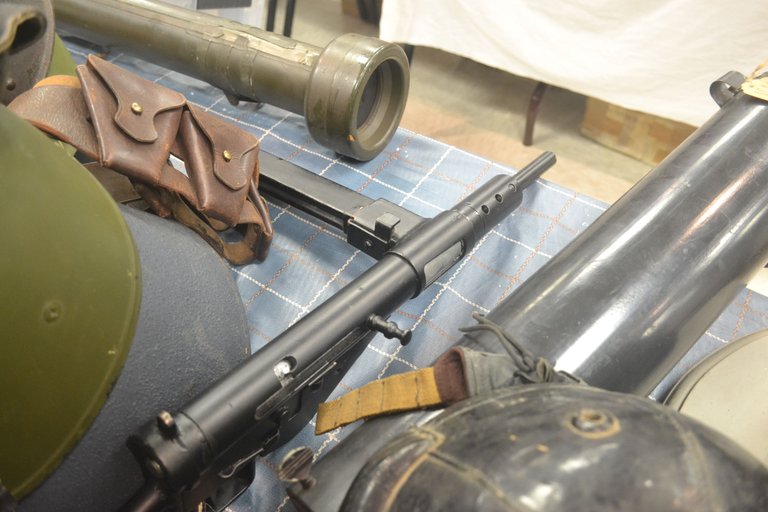
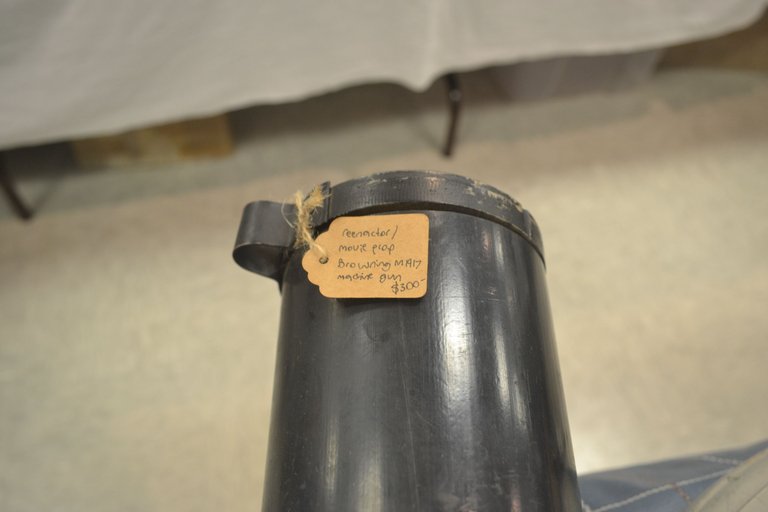
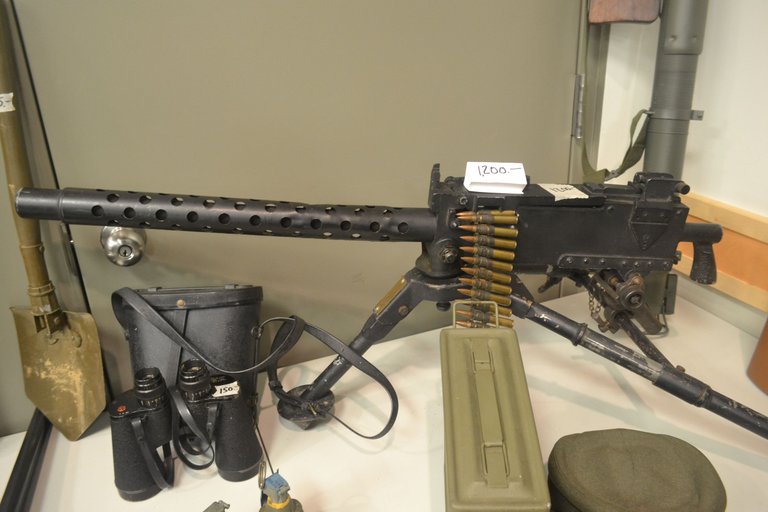
What a military post! I hope terrorists won't borrow info here 😀
Trust me, nothing here is news to terrorists. They can also easily get actual machine guns and assault rifles, unlike most Americans.
I have heard tell some people remove the rear sight on a Mosin to install a mount for a long eye relief scout-style scope on the dovetailed fixture there. Installing rings on the receiver would obviously mean changing the bolt handle as well.
Yeah, that's annoying. I like to still be able to use my iron sights, and the sniper variant of the Mosin is set up that way. So is my AK, incidentally.
Holy mother loader! The US of A is indeed born different. I kinda envy, to be honest. It's funny though that you can easily find old Brazilian-made Mausers in the US than here. The bureaucracy is so absurd here that collecting is impossible. And there you arez in a fair selling rocket lauchers 🤣🤣 Epic
Congratulations @steampunkkaja! You have completed the following achievement on the Hive blockchain And have been rewarded with New badge(s)
Your next target is to reach 1500 replies.
You can view your badges on your board and compare yourself to others in the Ranking
If you no longer want to receive notifications, reply to this comment with the word
STOPCheck out our last posts: